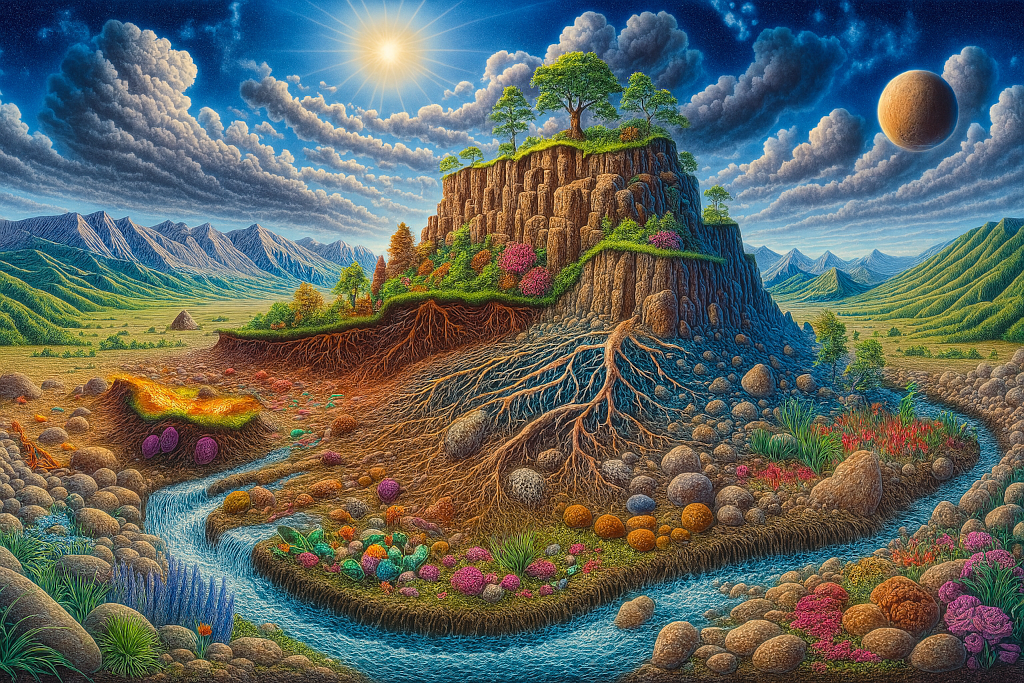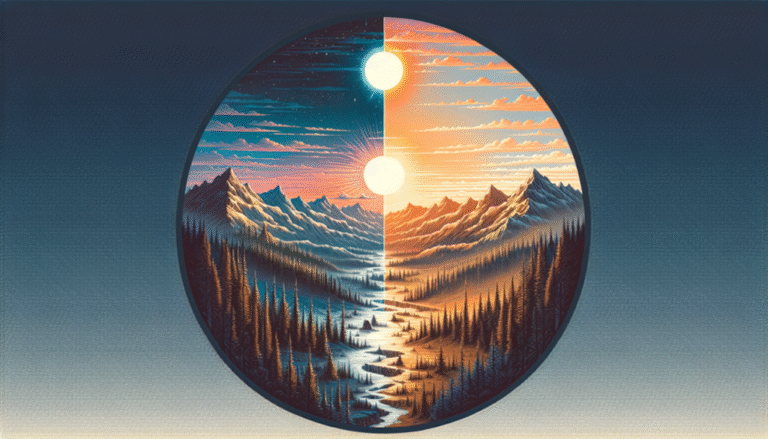You might not think twice about the dirt under your shoes—until you try to grow a tomato, hike through a forest, or even build a sandcastle. Suddenly, soil isn’t just “dirt.” It’s alive. It’s complex. And it’s been on a 500-million-year journey to get to you.
Most of us never stop to ask: Where did this dirt actually come from?
The forgotten origin beneath every forest, field, and garden
Not long ago, I asked a group of fifth graders: “How old is the soil in your backyard?” One guessed five years. Another said fifty. No one expected the real answer: hundreds of millions of years.
Soil wasn’t always here. In fact, when Earth first formed, there was no dirt at all—only rock. It took a miraculous combination of physical breakdown, chemical reactions, and biological life to turn ancient stone into the rich, earthy substance that makes all life on land possible.
From solid rock to fertile earth: how soil is born
The saga of soil begins with rocks. Big, old ones. Over time, those rocks began to break down through a slow-motion process called weathering. And it can be brutal.
- Temperature swings cause rock to expand and contract, leading to cracks.
- Water seeps in and freezes, splitting rocks apart like wedges.
- Wind blasts tiny particles off bit by bit.
- Roots from early plants pry into crevices, wedging them wider.
This weathered rock—called parent material—becomes the mineral base of soil. But it’s just half the story.
Dead stuff + time = living soil
As soon as life showed up on land, it began feeding the soil-to-be. Plants dropped leaves, animals died, and fungi and bacteria got to work breaking it all down.
Over time, these ingredients—mineral pieces from rocks and organic matter from once-living organisms—began to mix and form something new: soil.
But it wasn’t until 500 million years ago that things really took off. That’s when plants started claiming land in large numbers.
Their roots dug into the surface, cracking rock faster. Their decaying remains added nutrients. Soil began forming everywhere. The Earth grew a living skin.
Fun fact from the past:
Researchers studied ancient soils in Scotland and found that the first plant-like organisms—simple mosses—triggered faster soil formation. A patch that would’ve taken thousands of years to form naturally developed in just a few centuries once roots were introduced.
Five big forces that shaped today’s soil
Soil isn’t one-size-fits-all. Ever notice how Florida’s sand is different from Iowa’s rich black earth? That’s because five key factors influence what kind of soil you get:
- Parent material: Granite makes sandy soil. Volcanic ash becomes rich and dark.
- Climate: More rain = more plant life = thicker soils.
- Topography: Hills drain quickly, valleys collect water and nutrients.
- Living things: Earthworms stir things up. Microbes feed the roots.
- Time: Soil in a tropical rainforest might form in 10,000 years. In cold, dry places? A million.
But wait… soil is still changing
Here’s the wildest part: The soil under your feet is still evolving. Today, farmers, builders, and climate shifts all influence how it grows—or erodes.
In fact, global experiments have shown that heavy farming without natural composting can deplete topsoil in just decades—something that once took millions of years to build.
A challenge for you
You can actually watch soil form. Grab a clear jar, layer it with crushed stone, dead leaves, and a scoop of compost. Add a little water. Put it on a windowsill. In a few weeks, you’ll see the beginnings of layered soil—just like the Earth’s early history playing out, one inch at a time.
The dirt on soil’s big secret
Soil isn’t just where things grow. It’s how land became livable. It’s a time capsule of climate, life, and stone, transformed over eons. And it’s still growing, changing, partnering with life to shape the world we know.
Next time you plant a seed—or just walk across your yard—remember: the ground beneath you is one of Earth’s oldest living stories.




Leave a Comment